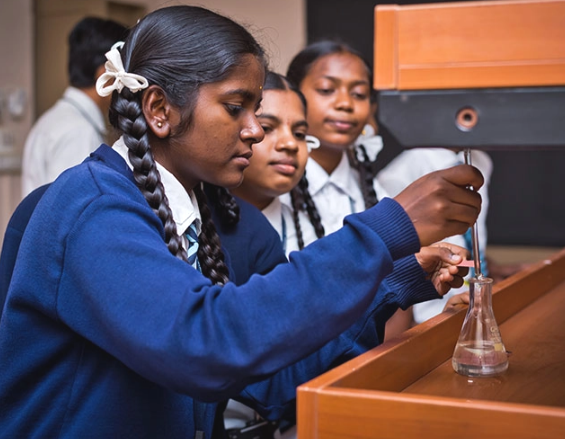
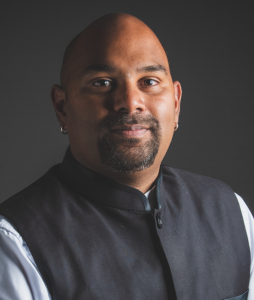
Bal Utsav is a collective of people bound by a shared passion to promote social good by making focused and sustainable interventions for children, specifically in education. We are not defined by age, borders, cultures, or socioeconomic backgrounds. We believe that the ripple effect of individual efforts can start a movement that will lead to real impact and sustainable change. Bal Utsav is now a registered trademark of Child Empowerment Foundation India (our legal entity).
The idea of Bal Utsav germinated in 2008 when I was courting my now wife, Binu Verma. The then Planning Commission of India had published a report about the number of NGOs in India (3.3 million NGOs for one billion of the population – a whopping one NGO for every 400 people). These numbers looked unbelievable, but coming from the Planning Commission, they are a reality. And this got us thinking. We decided to give up our corporate jobs and contribute to a more purposeful life.
According to UDISE survey conducted in 780 government schools in 2017, only 56 per cent of government schools had electricity, 63 per cent of schools had no playgrounds, 60 per cent had no boundaries walls, unusable toilets in more than 25 per cent of the schools and the pupil-teacher ratio were abysmal. Despite government allocation of funds and 32 per cent of CSR funds going into education, there is less to be desired and lots to be done. CSR in education can be a game-changer in improving public education in India. However, CSR models need to address long-term issues across the systemic chain to accelerate change in the education sector.
Bal Utsav was born from the idea that we need to take a celebratory approach to serious problem-solving. After all, the most joyous period of our lives is our childhood days. The name of our organisation, Bal Utsav is the coming together of two words Bal + Utsav (Children + Celebration). We promised ourselves that our work will be fuelled by the hope of the 400+ million children that India has, and we will serve them by celebrating childhood.
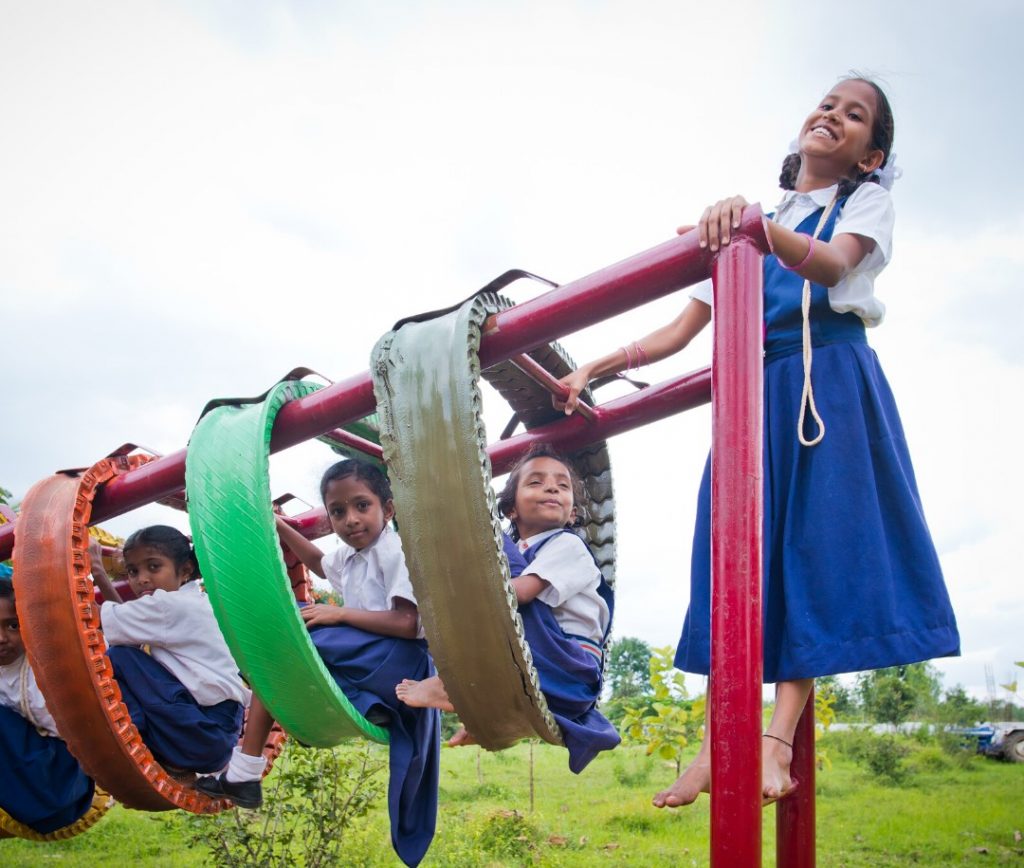
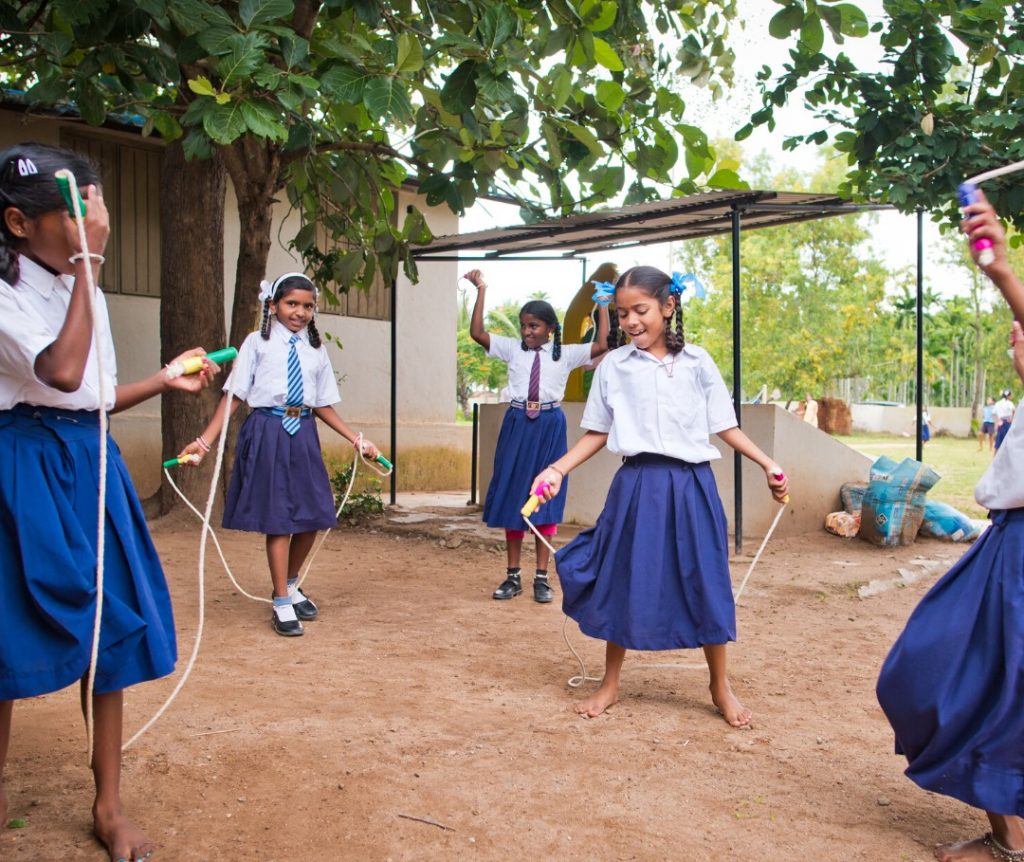
Our Flagship Programmes
Sampoorna Shaala ™ is a model school designed for large schools with over ~500 children. It is innovative, inclusive, interactive, internet-powered and inspires communities.
iShaala ™ is a model school designed for small schools with under ~100 children. This model school is innovative, inclusive, interactive, internet-powered and inspiring communities.
These programmes include focused and sustainable investments in Infrastructure, Teacher Development, Scholarship and Water, Sanitation and Hygiene in government schools.
Our service delivery is for children from 0 to 18 years of age (early childhood education to Class XII), with our scholarship programme alone extending beyond this age group.
School Selection Process
- We first secure funding and then look for schools in that specific geography that need intervention.
- Our MoU with the Government is at the State or District level. We, therefore, have enough elbow room to choose schools that are in need and are not necessarily influenced by local interventions.
- On signing the MoU, some schools do approach us for adoption. We then spell out the intent for adoption only after due consideration (including if they can form a school cluster) and if they are part of a group of schools that can feed and interact with each other.
- We prefer to take co-educational schools, followed by gender-based schools.
- The School Principal along with the SDMC (School Development and Monitoring Committee) then give us a formal request for adoption along with the consent to sign up for the performance-based outcome model.
Our Sustainable Investments
School Infrastructure
Schools without adequate infrastructure and hard infrastructure (classrooms, toilets, compound walls, etc) are an indication of the apathy that is shown to government schools. Lack of soft infrastructure (lights, fans, notebooks, etc) is a blend of apathy, lack of imagination and structural flaws that ails the system.
Our focused interventions make a huge difference to ensuring the must-haves are attended to while also making available resources that effectively help the children learn and stay in school (vending machines for sanitary pads, incinerators for safe disposal for menstrual waste, a WiFi mesh to ensure learning can happen anywhere in the school while being connected to high-quality content, school kits – comprising of bags, water bottles, notebooks, pencils, shoes and socks, examination pads). These are of immense help to the supported children and schools.
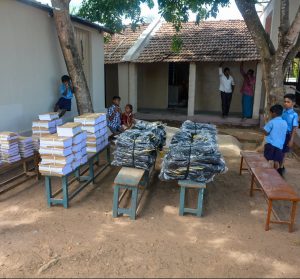
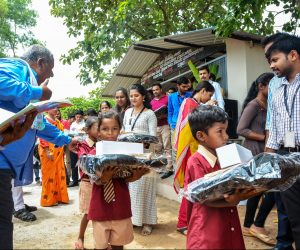
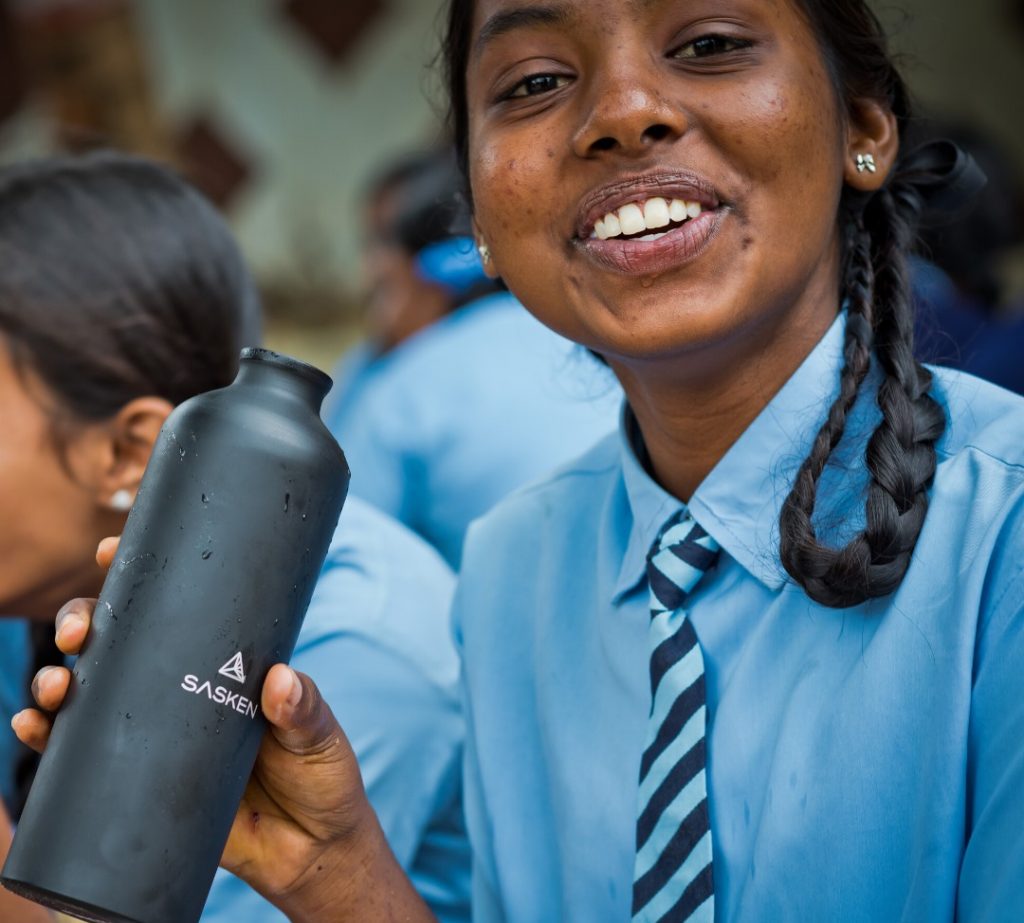
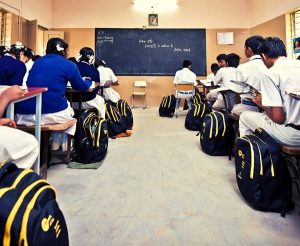
For the top one per cent of children in government schools, the understanding that they could devote their time and energy and make every effort to focus on academics and that their learning will not stop due to lack of resources is a huge motivation. It acts as an incentive for them to be a part of the distinguished alumni of the school while motivating their juniors to continue to give their best and that the sky is the limit where opportunities are concerned.
Teacher Development
With a whooping shortage of 12 million teachers, there is a huge gap, and the challenge here is to ensure that we have adequate teachers in school. Even if that had to be corrected – the next design flaw is a student-teacher ratio and not a teacher-class ratio. Making Para-teachers available at the supported schools, empowering them with the required resources and facilitation skills helps them deliver better while also ensuring schools retain teachers.
Scholarship
For the top one per cent of children in government schools, the understanding that they could devote their time and energy and make every effort to focus on academics and that their learning will not stop due to lack of resources is a huge motivation. It acts as an incentive for them to be a part of the distinguished alumni of the school while motivating their juniors to continue to give their best and that the sky is the limit where opportunities are concerned.
Water, Sanitation and Hygiene (WaSH)
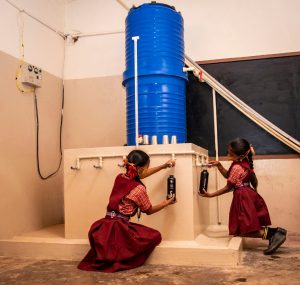 By providing clean drinking water, appointing janitors at the school and equipping them with cleaning supplies, delivering menstrual hygiene supplies through custom-made coins (for the vending machines) and providing incinerators that work even with erratic electricity supply ensures that the school is equipped with the must-haves for inculcating the best WaSH behaviour and system for optimal WaSH practices.
By providing clean drinking water, appointing janitors at the school and equipping them with cleaning supplies, delivering menstrual hygiene supplies through custom-made coins (for the vending machines) and providing incinerators that work even with erratic electricity supply ensures that the school is equipped with the must-haves for inculcating the best WaSH behaviour and system for optimal WaSH practices.
 We run a successful menstrual hygiene programme for the girls in all our schools by providing free menstrual hygiene supplies, state-of-the-art menstrual waste disposal mechanisms (IoT-enabled), coupled with awareness sessions (inspired by the Bharatiya philosophy) to enable girls to attend school throughout the year. We provide janitors and washroom cleaning supplies to maintain clean, hygienic toilets.
We run a successful menstrual hygiene programme for the girls in all our schools by providing free menstrual hygiene supplies, state-of-the-art menstrual waste disposal mechanisms (IoT-enabled), coupled with awareness sessions (inspired by the Bharatiya philosophy) to enable girls to attend school throughout the year. We provide janitors and washroom cleaning supplies to maintain clean, hygienic toilets.
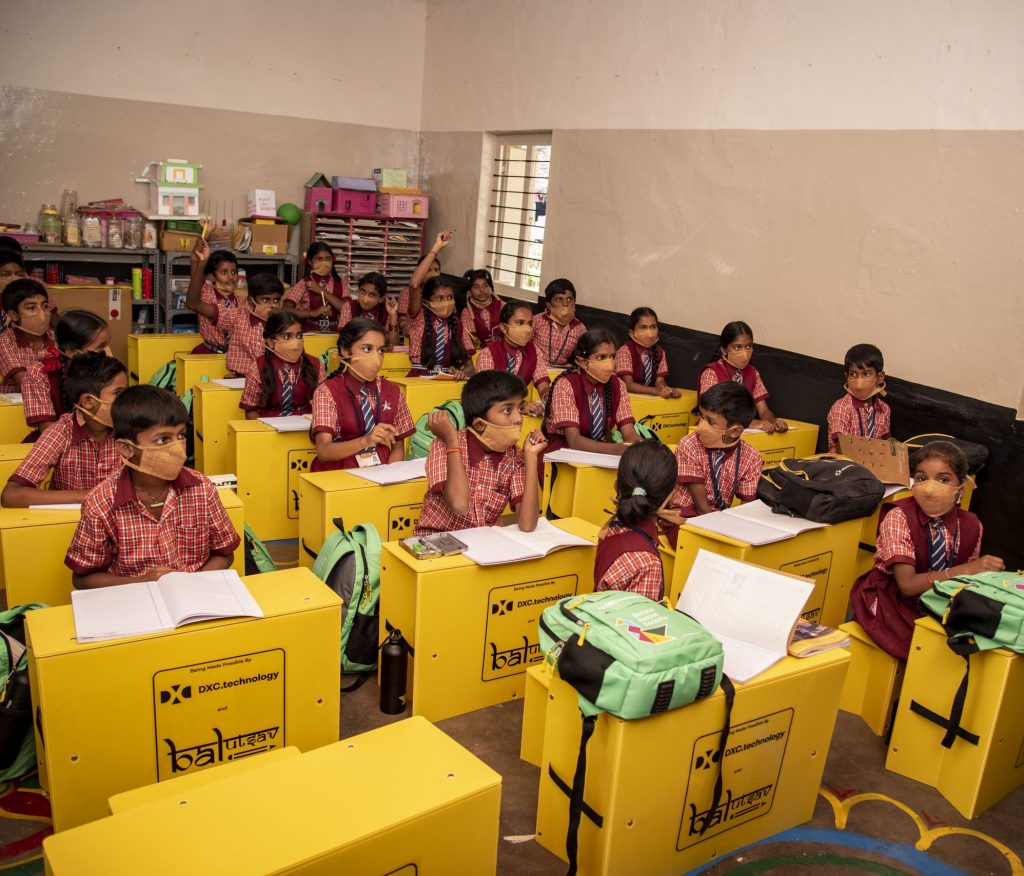 We commit to a minimum of 3-5 years to transform each school. This includes physical infrastructure, teacher development, scholarship roll-out and WaSH, and facilitating the behaviour of stakeholders and adoption of interventions by the community. This results in a gradual but sustained approach of making the school an agent of change where the change brought about by the transformation is focused, sustainable and life-changing for the students and the community. This change then gets internalised and therefore becomes a natural part of living for everyone in the areas of intervention.
We commit to a minimum of 3-5 years to transform each school. This includes physical infrastructure, teacher development, scholarship roll-out and WaSH, and facilitating the behaviour of stakeholders and adoption of interventions by the community. This results in a gradual but sustained approach of making the school an agent of change where the change brought about by the transformation is focused, sustainable and life-changing for the students and the community. This change then gets internalised and therefore becomes a natural part of living for everyone in the areas of intervention.
Our own experience has been that every school needs to be provided with the best resources as they play a vital role in shaping the children of today who will make the India of tomorrow. It is thus more important than ever that we unite and supplement existing efforts through every means possible to make this happen. CSR plays an integral role in reshaping the existing narrative while also playing a collaborative role in making model schools possible through strategic public-private partnerships.
Case Study
Our sustained involvement across the education value chain (infrastructure, technology, teacher training, and scholarship) has led to a transformational impact in the lives of the children in Shivamogga, Karnataka. With DXC Technology as our partner in the last two and half years, we have been able to bring a fundamental shift in perceptions about government school education within and outside the Shivamogga district.
Government High School (GHS), Kalahalli, Shivamogga, whose classrooms had tattered walls, abysmal enrolments, and high dropout, is now the pride of Badravathi, Shivamogga District. The old school building that did not even have access to clean drinking water and an unsafe playground now boasts of smart classrooms equipped with e-Learning content and a well-maintained infrastructure. Children have access to clean drinking water, sanitary pads (for girls), and high-quality school kits. The locals believe that the children of Kallahali School are more confident and have improved self-esteem thanks to the quality of education they receive. Kids in many rural areas typically travel more than 2 km to get access to school education. The only reason the students regularly travel this far irrespective of harsh weather or the poor condition of roads is the high quality of schooling facility they receive here. The great outcome of this revitalisation exercise is that the new and improved GHS, Kalahalli, is attracting students from other schools in the district. When school reopened in January 2021, it saw a 15 per cent increase in enrolment and a notable migration of children from private and convent schools.

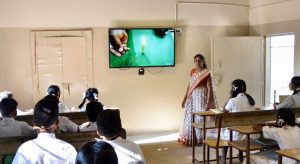
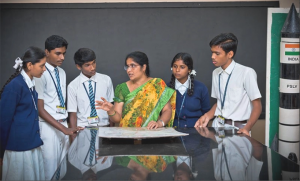
GHS, Kalahalli is not the only school benefiting from this revitalisation. We have adopted a total of seven rural schools in Shivamogga and given them a complete facelift. We brought in interventions such as overhauling the school infrastructure, providing students with brand new school kits and study tables, equipping teachers with tablets, installing smart TVs preloaded with educational content, and creating a clean and hygienic environment for students, teachers, and staff. When there was a dilemma in the last two years regarding the reopening of schools, the smart infrastructure provided helped the students continue their education. Children whose parents had mobile phones at home were given the license to download school portions of their particular academic year, while at the same time, teachers were given tablets with preloaded content to enable community learning and facilitate remote learning.
Testimonial
 Soumya, a teacher at Government Higher Primary School in Dummalli, Shivamogga District, and her colleagues, use an e-learning programme to ensure 130 students continue their education from their respective community/homes. According to Soumya, parents are relieved and happy that the kids are safe at home while they continue learning despite the lockdown. She believes it is these sustained interventions over the last two+ years that has led to increased enrolment, lower dropout and made private schools nearby and parents alike sit up and take notice of the government schools in Shivamogga.
Soumya, a teacher at Government Higher Primary School in Dummalli, Shivamogga District, and her colleagues, use an e-learning programme to ensure 130 students continue their education from their respective community/homes. According to Soumya, parents are relieved and happy that the kids are safe at home while they continue learning despite the lockdown. She believes it is these sustained interventions over the last two+ years that has led to increased enrolment, lower dropout and made private schools nearby and parents alike sit up and take notice of the government schools in Shivamogga.
GHSA and GHPS Kallahalli are recognised as best performing schools in many parameters and are adjudged as the best schools in the district. They continue to witness reverse migration (students giving up their private school education and enrolling themselves at these model government schools) and are consistently able to attract and retain students, which is quite contrary to the national trend. We are happy to share that some of our schools even demonstrate upward of 20 per cent increase in enrolment year after year.
Volunteer Involvement
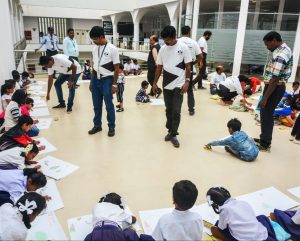 Over the last two years, we had 1218 employees from DXC who volunteered with us for 6610 hours. They have been part of activities like school painting, mentoring children, organising programmes like menstrual hygiene awareness for girls, coordinated Sports Day, etc. We have brought together people, technology, direction, resources, and determination in a healthy mix to ensure that learning continues unabated as the children battle through the pandemic. We are gearing up to bring in more interventions as the State prepares to reopen schools.
Over the last two years, we had 1218 employees from DXC who volunteered with us for 6610 hours. They have been part of activities like school painting, mentoring children, organising programmes like menstrual hygiene awareness for girls, coordinated Sports Day, etc. We have brought together people, technology, direction, resources, and determination in a healthy mix to ensure that learning continues unabated as the children battle through the pandemic. We are gearing up to bring in more interventions as the State prepares to reopen schools.
Our Perspective and Observation on the Schools
Teachers are the ones who are most committed to bringing about a lasting change in the lives of children. When they are supported with the necessary resources, it results in long-term change at the various supported schools. We would not have achieved what we have without the support of the teachers and the community. They have been an integral part of bringing life-changing education to children in need.
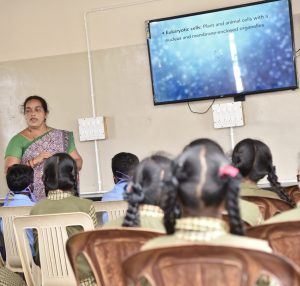
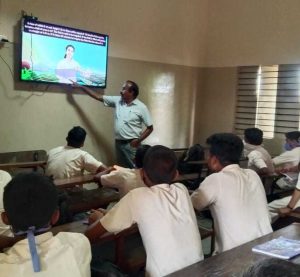
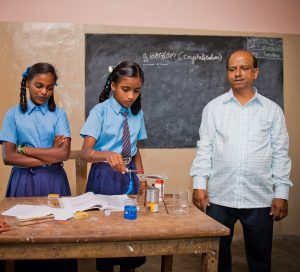
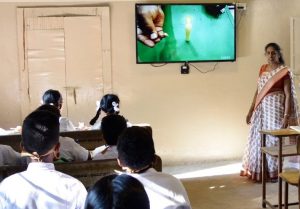
Our own experience has been that every school needs to be provided with the best resources as they play a vital role in shaping the children of today who will make the India of tomorrow. It is thus more important than ever that we unite and supplement existing efforts through every means possible to make this happen. CSR plays an integral role in reshaping the existing narrative while also playing a collaborative role in making model schools possible through strategic public-private partnerships.
We are excited to witness the adoption of our interventions in these schools, and we invite more corporates to join us.
Impact
We have successfully made a dent in the public education space. We have demonstrated that government schools can be model schools where students, parents and communities aspire to send their children to and where stakeholders can be proud to be a part of the success story.
The expressions, things that are said and those left unsaid of the parents regarding why we would be interested in the schools, what was in it for us was many a time relayed to us. Over the years, we have witnessed a change in the attitude of various stakeholders (parents, teachers, students, communities, and the Education Department). We are flooded with requests for similar interventions from various schools (within Karnataka, and nationally).
We have witnessed a consistent increase in enrolment and a decrease in attrition, and better learning outcomes year on year at both Sampoorna Shaala and iShaala. Our focused and sustainable interventions in Infrastructure, Teacher Development, Scholarships and WaSH have played a huge role in making the aforementioned possible.
For example, GHSA and GHPS Kallahalli are recognised as best performing schools in many parameters and are adjudged as the best schools in the district. They continue to witness reverse migration (students giving up their private school education and enrolling themselves at these model government schools) and are consistently able to attract and retain students, which is quite contrary to the national trend. We are happy to share that some of our schools even demonstrate upward of 20 per cent increase in enrolment year after year.
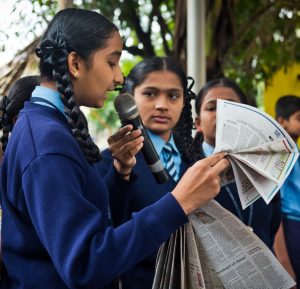
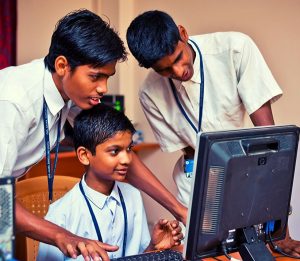
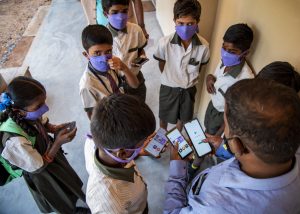
Testimonials
 Sri Shekharappa Gowda
Sri Shekharappa Gowda
Village Pramukh, Kallahalli Village
Bhadravathi Taluk, Shivamogga District
“Bal Utsav and DXC Technology (CSR Partner) have done yeoman service to this community by adopting this school. It is common to see people working to improve their own economic and social status in the community. Very few believe in giving back to society. The partnership between Bal Utsav and DXC is a testimony to this noble cause of providing education and bringing about a change in the lives of our children. I am very thankful to you for this.
Our school, an iShaala, is an example of what an ideal rural school should be. Many schools in India need this kind of support. My wish is to see all these schools changing the way our school has.
Rich people build temples, but what can a poor man do? In our society today, the rich build schools to make more money, and in the process, destroy our language and culture. The transformation of our government schools by Bal Utsav and DXC Technology helps nurture our language and culture. We are sincerely grateful to them.”
 Nagraj
Nagraj
BEO – Public Education Department
Shivamogga Taluk
“The basic purpose of education is to ensure that every child has access to it and can continue to attend and obtain good quality education for life. In this regard, the Central and State Governments have come up with many programmes and schemes to improve the public education system in the country. Along with these programmes, many affiliated organisations have adopted government schools to provide better facilities. This partnership has helped many students from rural schools to get access to better quality education. In 2019-20, in Shivamogga, DXC Technology and NGO Bal Utsav, in collaboration with the Education Department, adopted some government high schools and government higher primary schools in Kachinakatte, Nidige and Dummalli in Karnataka. The duo has been working together to provide better infrastructure, and most importantly, they have made facilities for clean water supply and initiated sanitation and hygiene facilities. They also provide scholarships for students who plan for higher studies. They provided materials like school bags, books, pencils and skill development training sessions. Smart TVs are installed in all the schools, free e-Learning apps are provided to all the children to facilitate their education and enhance their technical skills. Due to these developments, there is increased student enrolment, a reduction in the dropout rate, and quality education is provided to the children. On behalf of the Education Department, I congratulate DXC Technology and NGO Bal Utsav for their efforts.”
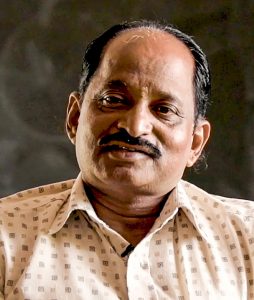 Sri V. Hiremath
Sri V. Hiremath
Headmaster, Government Higher Primary School Kallahalli
Kallahalli Village, Bhadravathi Taluk, Shivamogga District
“Most of the children come from farming communities. The government mandates a school within a kilometre radius. However, some of our school children come from a distance of more than 2 km. Through sunshine, rain or cold, our children walk across fields and through narrow pathways to reach the school every day. The motivation for them to do this is the high quality of schooling facility they receive here.”
Our goal is to be able to establish and operate at least one school complex (~1000 children) per district in India (700+ districts x 1000+ children = 7,00,000 to 10,00,000 children), through iShaala/Sampoorna Shaala. We want to expand our footprint across the country, and if India ends up playing a much larger role in the Asia Pacific Region, we would be keen to explore the possibility of serving other Asian countries and other developing nations in Africa.
Our Financial Support Group
Our current sources of funding include individuals, organisations, CSR, donations from Indians settled abroad (FCRA), support from private Foundations and also through events participation, etc.
We are supported by over 60 Corporates, many of whom channelise their CSR funds through us. We have not finalised our books of accounts for the last year, but the provisional data reflects Rs ~ 5 Crore (COVID-19-affected year).
Steps Taken to Help Beneficiaries During the Pandemic
Every child is given a unique licence mapped to their learning path. Teachers were given Tablets with preloaded content to enable community learning/facilitate remote learning. Schools are given content that can be viewed through large TV screens, enabling a continuous learning mechanism when children are physically present in school. Our supported schools have been doing this for six months now. Teacher support programmes especially focused on the changing dynamics of delivery and adoption of technology. We are also keen to increase the number of supported schools. We are seeking assistance from individuals and organisations who would like to aid blended learning so we can develop the right kind of systems for India in this digital age. We need to make a significant investment in education technology and make it with much thought, creative imagination and careful planning.
Way Forward
As an NGO, we want to continue to demonstrate what is possible in the public education space and build a positive narrative around the same while working alongside the government to adopt models to strengthen public education. We would like to start with 10 per cent coverage of each State (about three of the 31 districts in Karnataka) and expand to similar coverage in each zone (South, North, West and East). We want to serve at least 30,000 children in the next two years in approximately 100 schools.
Our goal is to be able to establish and operate at least one school complex (~1000 children) per district in India (700+ districts x 1000+ children = 7,00,000 to 10,00,000 children), through iShaala and Sampoorna Shaala. We want to expand our footprint across the country, and if India ends up playing a much larger role in the Asia Pacific Region, we would be keen to explore the possibility of serving other Asian countries and other developing nations in Africa.
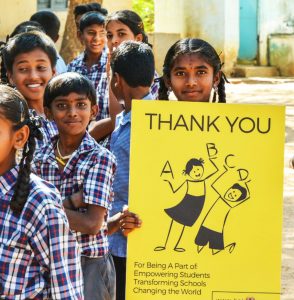
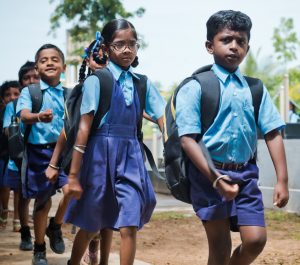
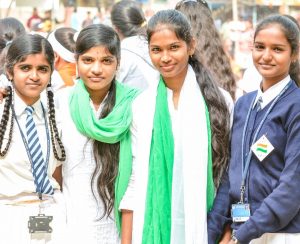
The opportunity to solve various crises that have been plaguing us for decades is possible by this generation. We need more committed individuals and organisations to join in, unite and supplement existing efforts. The ability to build the future we want lies with us today, and with available resources and tools like never before, the time to become a change-maker is now. We have to build an unwavering focus on solving the problems while keeping our sights on building a strong nation. Our solutions need to be tailored to what we want to leave behind for our future generations. Young and committed hands are required for the task of nation-building. I welcome those who consider making a difference to join us and pitch in with your talent, energy, grit, entrepreneurial spirit to realise this vision of a strong and vibrant India.
We have to give up the idea that giving back to the community is a plan to be pursued after retirement. Building a better tomorrow cannot wait. We have to start TODAY!
All problems can be solved if we all pool in our efforts and resources. Keeping a mindset of collaboration, teamwork and supplementing efforts is the way forward. We have to start by solving small problems and build solutions for scale. The need on the ground is massive that there is room for everyone to contribute to the mission of nation-building.
Ramesh Balasundaram is a senior professional and organisational catalyst with a passion for driving innovation in diverse sectors, including, but not limited to, corporates, the citizen sector and the government. He is the Co-founder and Director of Bal Utsav and a former consultant to the Karnataka Knowledge Commission (Government of Karnataka).

